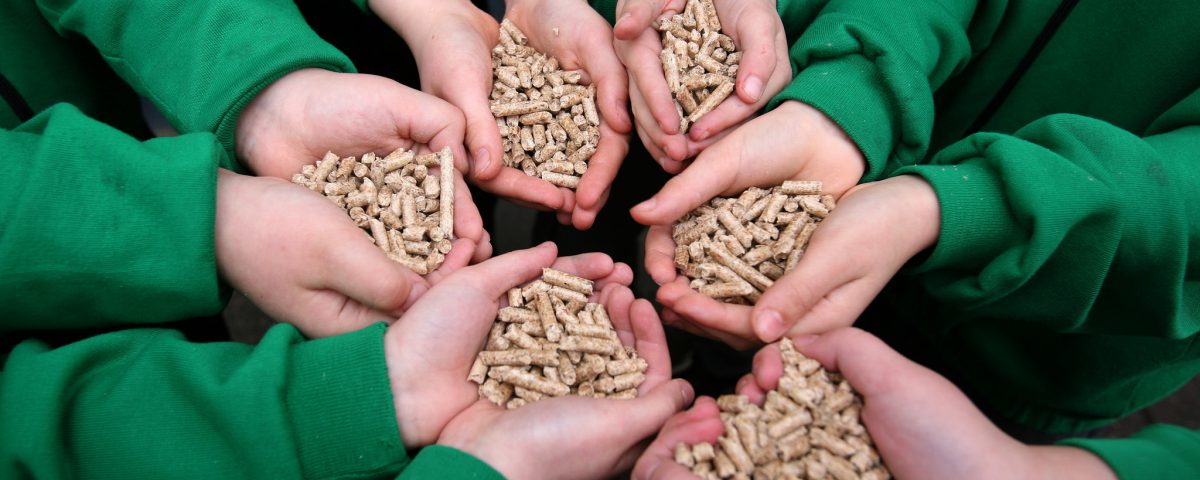As the European Union’s 2020 climate and energy targets fast approach, energy providers are attempting to innovate to provide sufficient energy at reasonable cost. The UK’s Drax Power Station has recently received subsidies to fully convert to energy production from biomass rather than coal.
Since this approval, various press releases by NGOs and magazines have claimed that the wood pellets used in the production of bioenergy are at least as bad as coal. They argue that biomass should not be included in the European Union’s renewable energy sustainability criteria. Efforts by those who supposedly are concerned with the environment would make a transition away from fossil fuels more difficult. To support these views is not just scientifically unsound— their implications could be economically disastrous.
Most of the negative perception surrounding biomass result from myths about its production. Biomass energy is extracted through burning excess wood and using the energy it creates for heat and electricity. Using wood to produce heat is one of the oldest sources of energy, and still the main source in many developing nations. In fact, the wood pellets used in the process for industrial biomass conversion are made from wood that is unusable in other industries. Instead of simply disposing of wood waste, biomass harnesses it and uses it as energy.
Whereas the burning of fossil fuels releases CO2 that has been trapped for a considerable amount of time, the use of biomass releases CO2 from the wood that accumulated as the plant grew. This means that there is no net release of CO2 if the foresting techniques used in the wood pellet production are sustainable. The contributions of CO2 from the burning of wood pellets will be reabsorbed into the same forests that produce the biomass, making it carbon neutral.
Another myth is centred around an unrealistic alternative. If the wood used for energy production was instead disposed, this would not provide environmental benefit. Since forests are not harvested specifically for biomass purposes, trees are not specifically removed for energy production. This means no carbon reduction would occur if biomass use stopped. At the same time, as this wood would either be burnt or left to decay otherwise, the same levels of CO2 would be released regardless.
Wood pellets don’t only provide an efficient source of energy, they also significantly lower costs when compared to other renewables. In addition, their reduced emissions, up to 80 percent lower than coal, make pellets an appealing option as European nations seek to meet their 20-20-20 goals for emission reductions. Supporting biomass is essential in the transition away from fossil fuels, and it shouldn’t be condemned by environmentalists. It’s a practical solution to a pressing problem.
Beyond the direct environmental impacts, other concerns surrounding biomass involve its effects on forestry. Not only does biomass not harm forests, the economic incentives the industry provides encourage the use of sustainable forestry techniques. Most of the wood pellets used in Europe are domestically sources, and are therefore subject to the sustainable forestry criteria set out by EU law. The remainder of the import comes mainly from the Southeast United States, where assurances on the sustainability of the production of biomass has been given. Those in the forestry business have no incentive to break these rules, as they would face the loss of customers if they do. This is the point which is ignored by many of those who campaign against the use of biomass; that the economic benefits of biomass use aid in encouraging environmental sustainability.
The long term economic benefits for the producers of wood pellets from keeping with sustainable forestry practices outweigh any gains that could be had by using unsustainable forestry techniques that would harm the environment. Since many of these forests are privately owned, it ensures that even their waste is profitable, reducing the likelihood that they will be converted into something with higher cash-flow like real estate. Maintaining the profitability of private forestry ensures reinvestment into those forests as it would be in the economic interests of their owners, while simultaneously providing environmental benefits. This increasing investment in biomass also reduces the use of fossil fuels, which makes it easier to switch to even more energy efficient platforms in the future.
It’s crucial that European nations produce energy in a more environmentally conscious manner. The choice is often presented as either high-cost, low-return renewables or low-cost, high-return, environmentally damaging fossil fuels, but that is a false dichotomy.
While more expensive renewables may be better for the environment than biomass, they come at a cost that most households would be unable to bear. Those who criticise biomass ignore this reality, and offer only idealistic alternatives to fossil fuels. As the global community grows increasingly concerned about the negative consequences of climate change, transition measures should be prioritised. Instead of only seeking idealistic, far-off renewables, people should encourage marginal improvements, and understand the tough financial realities presented by making the full switch to renewables.
This article was first published by Daily Globe.
Picture: Creative Commons Oregon Department for Forestry
This piece solely expresses the opinion of the author and not necessarily the organization as a whole. Students For Liberty is committed to facilitating a broad dialogue for liberty, representing a variety of opinions. If you’re a student interested in presenting your perspective on this blog, you can submit your own piece to [email protected].

